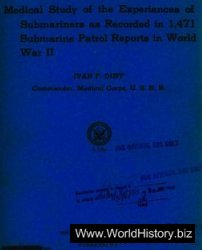Shestakovo is an open site of 125 000 m2 in area east of Novosibirsk. It is located on a high, steep exposure of the Kita River bank, 500 m down-stream from Shestakovo village (literally, pole village) at 55°54' N, 87°57' E. Sergei V. Leshchinskiy (1998,2000, 2001a, 2001b) and Vasily N. Zenin (Zenin etal. 2000b) directed the more recent excavations that over time have produced more than 3000 pieces of bone and teeth, 90% of which are mammoth (Mammuthus primigenius). Of an estimated 18 MNI, almost half (44%) are sub-adult, whose good preservation despite bone and tooth immaturity is attributed to their having been buried in a protective muddy setting. These deaths do not represent an epidemic die-off or mass killing by human hunters. Instead, the skeletons are thought by Leshchinskiy (2001a:295) to represent isolated deaths that occurred over many centuries, perhaps often of sickly animals. The concentration of skeletons is attributed to a higher density of living animals in one location than expected on a random basis because of the attractive mineral nutrients at Shestakovo.
Excavations are continuing at Shestakovo (Derevianko etal. 1997e, 1999e, 1999e, 2003c, Zenin and Maschenko 2000). During the 12 field seasons of excavation, fTom 1975 to 1978 and 1992 to 1999, 11 species of large mammals were recovered. They represent natural deaths at what Leshchinskiy calls a “beast solonetz.” The term refers to a zoogeological locality where animals came to obtain various minerals and salts containing essential metabolic elements such as calcium, magnesium, and sodium that were concentrated in wet hollows close to mineral-rich bedrock. Gary Haynes (2002b:204) emphasizes the attraction for mammoths at “mineral licks” as being the need for iodine. Leshchinskiy hypothesizes that large herbivores frequented the Shestakovo beast solonetz or “mineral oasis” to obtain the nutrients that were missing in their diets due to the unfavorable mineral-poor acidic soil condition of the late Pleistocene steppe-tundra. In addition to the strong association between the soil chemistry of Shestakovo and the extensive mammoth remains, Leshchinskiy cites Panichev (1990) for examples of earth-eating (lithophagy) by large herbivores. Panichev inferred lithophagy on the basis of finding rock and mineral fragments in large herbivore digestive tracts and coprolites, including the lower gut of the Kirgilyakh mammoth calf. Despite the excellent associations for the mineral oasis-multiple mammoth hypothesis, this portion of the West Siberian Plain has a limited number of fossil localities with one or more mammoths. One is on the Tom River within the city of Tomsk, mentioned
In Chapter 2. Two others are on the Ob River. Both are called Krasny Yar. One is in the region of Tomsk. The other is located to the south, a short distance down-river from Novosibirsk and described previously in this chapter (site 12). Another consideration that comes to mind is that Shestakovo might have been an “elephant cemetery.” The key to assessing this model would be the perimortem taphonomy expected when live animals trampled the bodies of the dead (Haynes 1988). We would expect perimortem and postmortem bone breakage, gritty sand and rock abrasions, much disarticulation, and random scatter (see especially Haynes 1991, 1988). A final consideration would be microbial poisoning by cyanobacteria as proposed by Thekla Pfeiffer and Andreas Braun for many dead articulated Pleistocene animals found in an ancient lake in eastern Germany (Perkins 2001).
Twenty-one carbon-14 dates for Shestakovo range fTom approximately 25 660 BP (Layer 24) to 18 040 BP (Layer 17) (Vasili’ev et al. 2002:523). This late Pleistocene time range embraces the end of the Kargin warming to the middle of the Sartan cooling period (Leshchinskiy 2001a:295, Zenin et al. 2000b).
Late Pleistocene hunters and their families also visited Shestakovo, as evidenced by six blade - and burin-containing cultural layers above the bone-bearing unit. Over the six layers some 1500 artifacts were recovered, many made of bone and some stylistically like those recovered at the Upper Paleolithic sites of Mal’ta and Buret (Derev’anko et al. 1998). Zenin (personal communication, July 4, 2001) has found no cut marks on the mammoth bone, but believes that there may be some on the reindeer bone. Leshchinskiy proposes that mammoth ivory was a sought-after fabrication material inasmuch as some pieces were found with notches and splitting, and some ivory pieces had been fashioned into formal tools. He also suggests that humans also consumed the salty and mineral-rich mud and water, although there is no evidence for this suggestion. As Shestakovo is located near the southern boundary of the late Pleistocene West Siberian Plain, Leshchinskiy (2001a:293) proposes that a close relationship existed between the mineral oases, the migration paths of mammoths, and the hunting and travel routes of Upper Paleolithic human groups. In this regard, Zenin and Konovalenko (2001) reported that the nearest possible stone source for a cache of stone artifacts was 220 km away. Because humans could not survive by eating only plant products of this region, they were probably as dependent on animals for food as were Arctic Eskimos at historic contact. Almost 95% of the Eskimo diet was obtained from animal sources. Most of the remaining 5% consisted of watery berries and the sour-tasting lichen “salad” obtained fTom the stomachs of slaughtered reindeer. For the Paleolithic people of the West Siberian Plain the primary land animals would be those adapted to the tundra-steppe habitat - mammoth, wooly rhinoceros, bison, horse, saiga antelope, polar fox, lemmings, and other species. Leshchinskiy (2001a:298) further suggests that the changes in the late Pleistocene geochemical landscape of northern Eurasia could have played a “crucial role in the extinction of megafauna.” The paleontological remains that we studied were housed in two locations. First, there was a large collection in the Institute of Archaeology and Ethnology, Academgorodok, Novosibirsk. This collection was made available for study by V. N. Zenin in July 2001. The second collection was housed in the Department of Palaeontology and Historical Geology, Tomsk State University, Tomsk. This smaller collection was made available by S. V. Leshchinskiy in June 2002.
In sum, Shestakovo is a natural, non-anthropogenic, large-mammal-bone site whose contents accumulated over many centuries of time. According to Leshchinskiy the accumulation was due to the nutrient attraction of the mineral-rich locality. As such, we should expect the perimortem bone damage signature to be very different from that found in sites formed by human occupation. If, as Leshchinskiy suggests, the human utilization of Shestakovo is largely later than the major mammoth-bearing unit, then the frequency of human-produced damage - such as cut and chop marks, burning, etc. - should be extremely low.




 World History
World History









